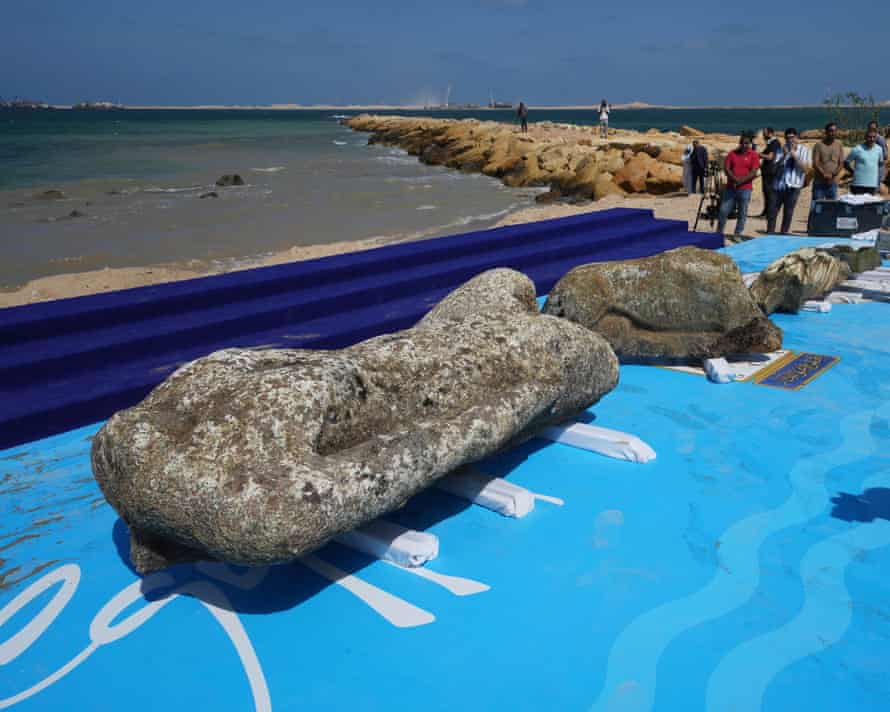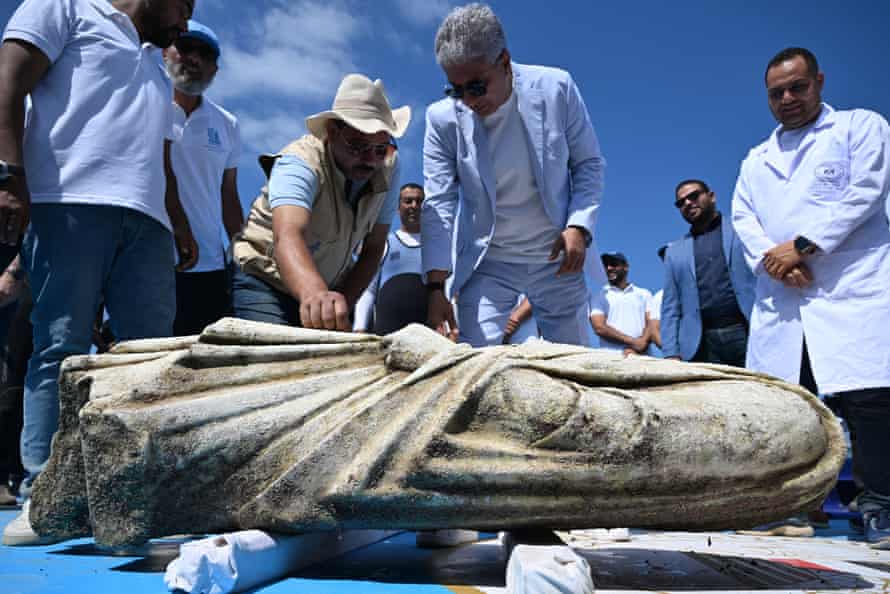The Historical Significance of Canopus
Canopus, an ancient city that thrived for over two millennia, bears significant historical importance that has shaped the cultural landscape of Egypt. Located near the Nile River, Canopus was founded around the 6th century BCE and rapidly developed into a vital cultural and religious center. One of the key highlights of Canopus is its association with the worship of Serapis, a deity that emerged during the Hellenistic period. Serapis combined elements of the Greek gods and the Egyptian pantheon, symbolizing the cultural syncretism that characterized this era. The city’s temples dedicated to Serapis attracted thousands of pilgrims, who sought healing and fortune, thus reinforcing the city’s status as an essential pilgrimage site.
Moreover, Canopus’s proximity to Alexandria further amplified its significance. As Alexandria became a major center of learning and commerce, Canopus served as a spiritual complement to this bustling metropolis. Scholars and philosophers often journeyed from Alexandria to Canopus, recognizing it as a space where religious and intellectual pursuits intertwined. The city’s alignment with the sanctuaries dedicated to Greek and Egyptian gods ensured its persistent relevance in the spiritual life of the region, fostering a unique environment for the exchange of ideas and beliefs.
Archaeological discoveries at Canopus offer profound insights into the daily lives, religious practices, and socio-political dynamics of the time. Artifacts unearthed from the sunken city, including statues, inscriptions, and everyday items, highlight the sophistication of its society. The remains of grand temples indicate a community that valued both its religious traditions and its architectural advancements. Canopus, thus, stands not only as a testament to ancient Egyptian devotion but also as a landmark of cultural interconnection that has enriched the tapestry of Egypt’s heritage.
The Discovery and Exploration of the Sunken City
The recent archaeological efforts to uncover the sunken city of Canopus, located off the coast of Alexandria, Egypt, have provided significant insights into ancient urban development and maritime practices. This submerged city, believed to have once been a thriving settlement, has long captured the imagination of historians and archaeologists alike. The initial discovery of its ruins was made possible through the use of advanced underwater technology, which has vastly improved the efficiency and accuracy of archaeological investigations in marine environments.
Among the innovative techniques employed during the exploration of Canopus were remote-operated vehicles (ROVs) equipped with high-resolution cameras and sonar mapping systems. These devices allowed researchers to survey vast underwater landscapes without the need for extensive diving operations, thus overcoming many of the challenges typically associated with underwater archaeology. Additionally, 3D imaging technology facilitated the creation of detailed models of the submerged structures, offering scholars a closer look at the layout and design of the ancient city.
However, the exploration of Canopus was not without its obstacles. Archaeologists faced difficulties due to the region’s murky waters, which limited visibility and made it challenging to accurately document the findings. Moreover, the preservation of artifacts and structures in such a dynamic marine environment posed significant concerns, as exposure to changing tides and saltwater can lead to rapid deterioration. Despite these challenges, the efforts to excavate and study Canopus have yielded important artifacts, including architectural remnants, pottery, and inscriptions that offer valuable information about the city’s historical context.
The discoveries made during these underwater excavations have heightened interest in understanding not only the architecture of ancient Egypt but also the complex maritime trade routes that connected Canopus with other significant locations in the Mediterranean. As archaeologists continue to explore this ancient sunken city, the implications for our understanding of urban planning and maritime culture in antiquity remain profound.
The Artifacts Retrieved from the Depths
The excavation of the sunken city of Canopus has yielded a remarkable array of artifacts that provide insight into the lives of its ancient inhabitants. Among the most notable discoveries are statues representing various deities, which indicate the religious practices prevalent in the city. These sculptures, often crafted with intricate details, reflect the artistic skills and spiritual beliefs of the Canopians. The presence of these religious icons suggests that Canopus was not only a vibrant urban center but also a significant site for worship and ritual.
In addition to statues, numerous pottery fragments have been retrieved from the depths, showcasing the daily life and economic activities of the civilization. These ceramics vary in shape and size, with some pieces exhibiting elaborate designs that highlight the craftsmanship of the period. The pottery often serves practical purposes, such as storage and cooking, and understanding these items allows researchers to reconstruct the dietary habits and social customs of Canopus’s inhabitants.
Furthermore, inscriptions found on various artifacts provide valuable context regarding the political and social structures that existed in Canopus. These inscriptions, written in ancient languages, reveal information about civic life, trade relations, and governance. By studying the written records, archaeologists can piece together narratives about the city’s history, its significance in the broader context of ancient Egypt, and its eventual decline.
Each artifact recovered from Canopus tells a story, contributing to our understanding of its cultural and historical significance. The interplay of these objects in revealing the daily lives, religious practices, and artistic expressions of ancient Egyptians illustrates the interconnectedness of human activities and beliefs. The ongoing analysis of these findings promises to enhance future archaeological studies, providing further insights into the enigmatic civilization that once thrived at Canopus.
The Future of Canopus: Preservation and Research Efforts
The rediscovery of Canopus, the ancient sunken city of Egypt, represents a critical juncture in the field of underwater archaeology. As advancements in technology enhance our ability to explore and preserve such underwater sites, it is imperative that we engage in robust preservation efforts to protect Canopus from environmental degradation and potential looting. These preservation initiatives are essential not only for safeguarding the archaeological integrity of the site but also for ensuring that future generations can appreciate its historical significance.
Ongoing research efforts are also crucial in uncovering the rich tapestry of history and culture that can be found within the submerged ruins of Canopus. Archaeologists, historians, and researchers are working collaboratively to document the site through modern techniques such as 3D mapping and remote sensing. This scientific inquiry aims not only to enhance our understanding of ancient Egyptian civilization but also to illuminate the city’s broader role in maritime trade and cultural exchange during its period of prominence.
The potential for tourism related to Canopus cannot be understated. As awareness of this ancient treasure grows, it could attract visitors from around the world, eager to witness the remnants of a civilization that once thrived along Egypt’s coastline. The integration of responsible tourism practices will be vital to ensure that visitors can engage with Canopus without compromising its delicate ecosystem or cultural heritage. The involvement of local and international authorities will be essential in developing sustainable tourism models that prioritize conservation.
In conclusion, the future of Canopus hinges on a multifaceted approach that emphasizes preservation, research, and responsible tourism. By fostering collaboration among archaeologists, local communities, and stakeholders, we can safeguard Canopus as both an archaeological marvel and a testament to Egypt’s rich heritage, enhancing global interest in underwater archaeology in the process.



